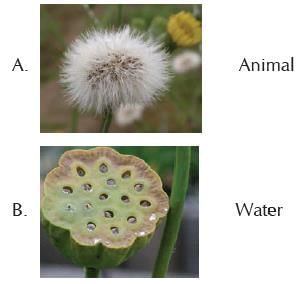Class 5 Exam > Class 5 Tests > Science Olympiad for Class 5 > Olympiad Test: Plant Life - 2 - Class 5 MCQ
Olympiad Test: Plant Life - 2 - Class 5 MCQ
Test Description
15 Questions MCQ Test Science Olympiad for Class 5 - Olympiad Test: Plant Life - 2
Olympiad Test: Plant Life - 2 for Class 5 2025 is part of Science Olympiad for Class 5 preparation. The Olympiad Test: Plant Life - 2 questions and answers have been
prepared according to the Class 5 exam syllabus.The Olympiad Test: Plant Life - 2 MCQs are made for Class 5 2025 Exam. Find important
definitions, questions, notes, meanings, examples, exercises, MCQs and online tests for Olympiad Test: Plant Life - 2 below.
Solutions of Olympiad Test: Plant Life - 2 questions in English are available as part of our Science Olympiad for Class 5 for Class 5 & Olympiad Test: Plant Life - 2 solutions in
Hindi for Science Olympiad for Class 5 course. Download more important topics, notes, lectures and mock
test series for Class 5 Exam by signing up for free. Attempt Olympiad Test: Plant Life - 2 | 15 questions in 30 minutes | Mock test for Class 5 preparation | Free important questions MCQ to study Science Olympiad for Class 5 for Class 5 Exam | Download free PDF with solutions
Detailed Solution for Olympiad Test: Plant Life - 2 - Question 1
Detailed Solution for Olympiad Test: Plant Life - 2 - Question 2
Detailed Solution for Olympiad Test: Plant Life - 2 - Question 3
Detailed Solution for Olympiad Test: Plant Life - 2 - Question 4
Detailed Solution for Olympiad Test: Plant Life - 2 - Question 5
Detailed Solution for Olympiad Test: Plant Life - 2 - Question 6
Olympiad Test: Plant Life - 2 - Question 7
Which of the following is the best-suited condition for seeds to germinate?
Detailed Solution for Olympiad Test: Plant Life - 2 - Question 7
Detailed Solution for Olympiad Test: Plant Life - 2 - Question 8
Olympiad Test: Plant Life - 2 - Question 9
Which of the following shows the correct match of seed and its mode of dispersal?


Detailed Solution for Olympiad Test: Plant Life - 2 - Question 9
Olympiad Test: Plant Life - 2 - Question 10
From which part of the plant can sugarcane be grown?
Detailed Solution for Olympiad Test: Plant Life - 2 - Question 10
Detailed Solution for Olympiad Test: Plant Life - 2 - Question 11
Olympiad Test: Plant Life - 2 - Question 12
What is the primary method by which horsetail spores are dispersed?
Detailed Solution for Olympiad Test: Plant Life - 2 - Question 12
Olympiad Test: Plant Life - 2 - Question 13
Which of the reproductive parts are pollinated by wind?
A. Stamen
B.Pistil
C.Corolla
D. Calyx
Detailed Solution for Olympiad Test: Plant Life - 2 - Question 13
Olympiad Test: Plant Life - 2 - Question 14
What do farmers add to the soil to make it fertile?
Detailed Solution for Olympiad Test: Plant Life - 2 - Question 14
Olympiad Test: Plant Life - 2 - Question 15
The joining of a sperm and an egg during sexual reproduction is called?
Detailed Solution for Olympiad Test: Plant Life - 2 - Question 15
|
37 videos|80 docs|50 tests
|
Information about Olympiad Test: Plant Life - 2 Page
In this test you can find the Exam questions for Olympiad Test: Plant Life - 2 solved & explained in the simplest way possible.
Besides giving Questions and answers for Olympiad Test: Plant Life - 2, EduRev gives you an ample number of Online tests for practice



















